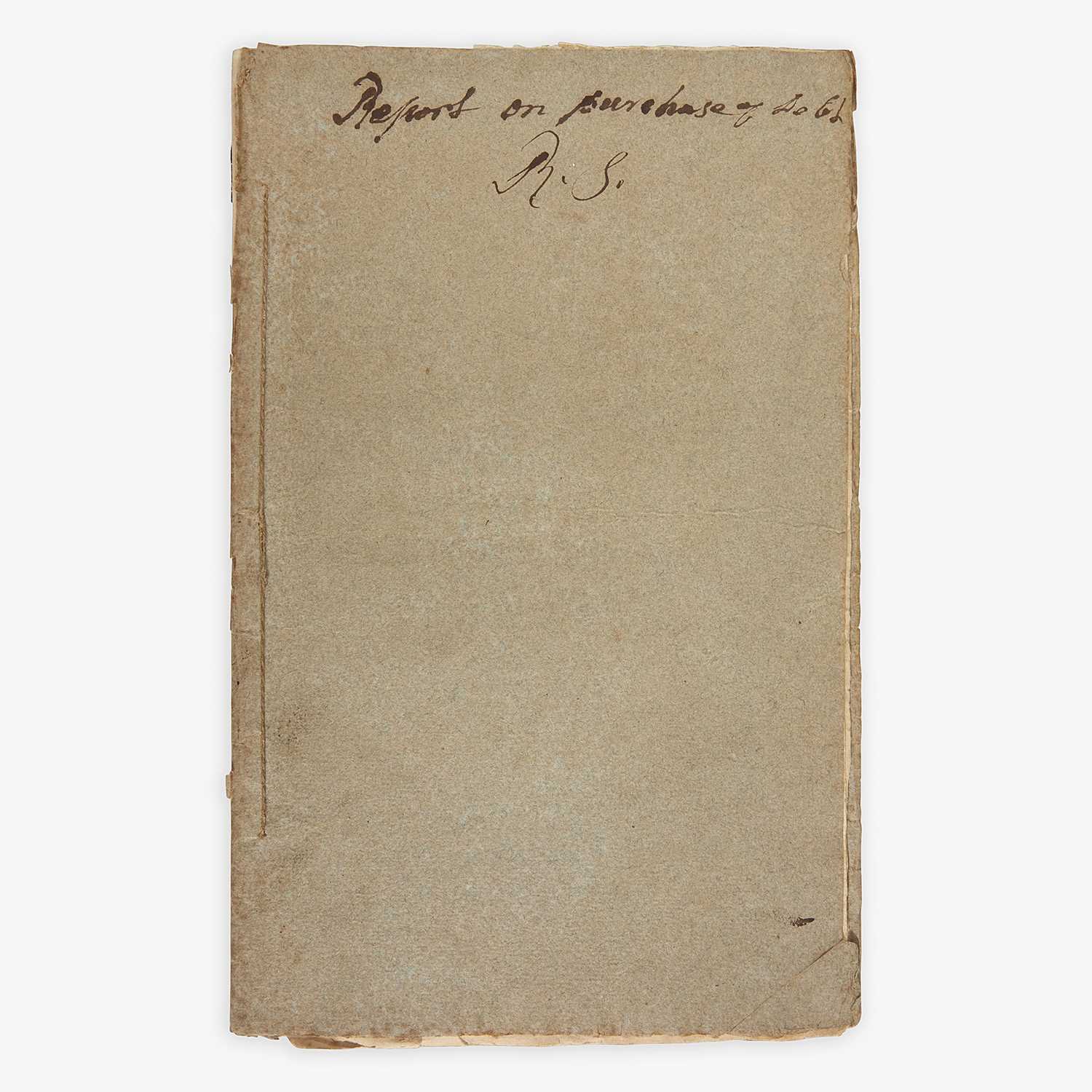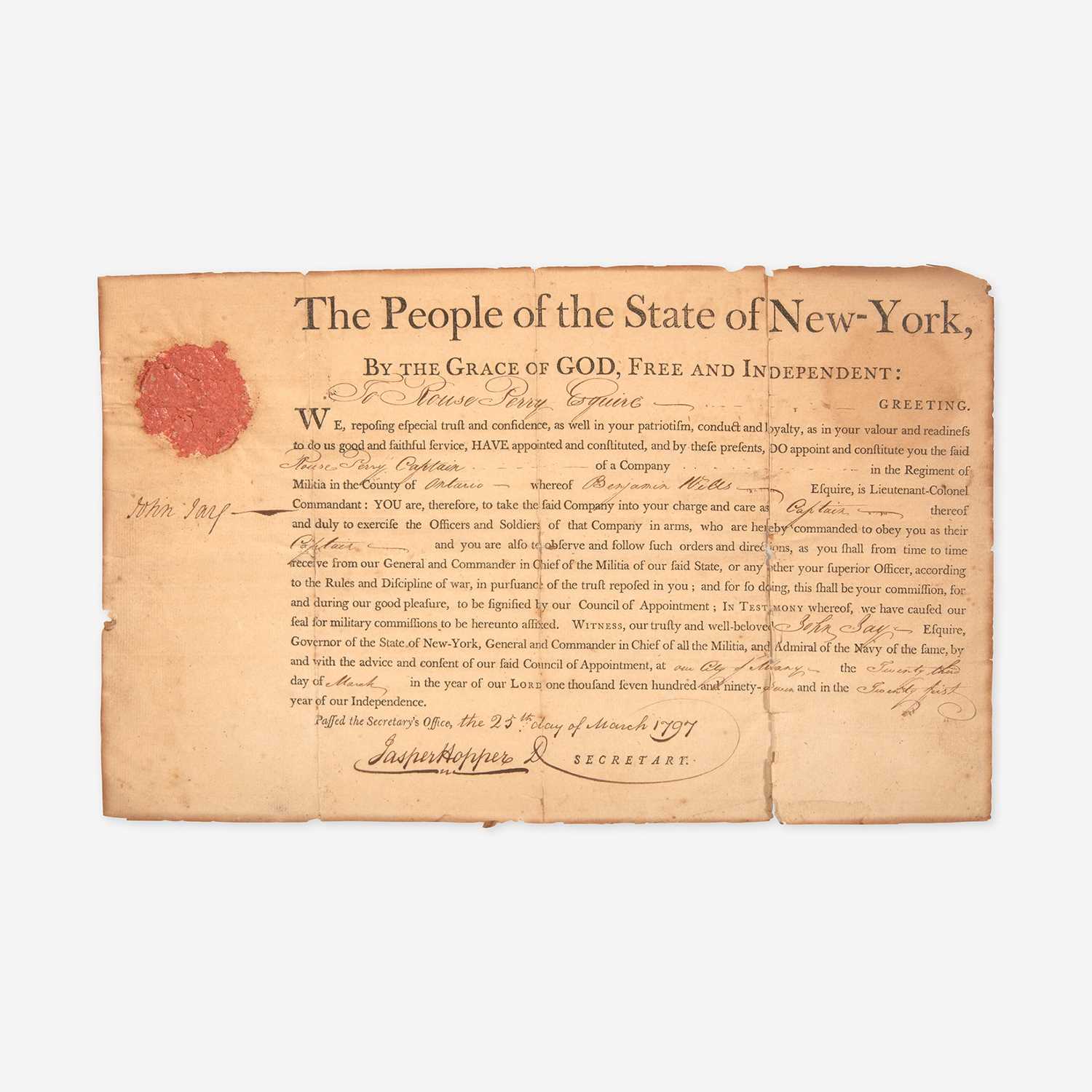JAY, John (1745-1829), Founding Father . Autograph letter signed (“John Jay”), as Chief Justice of the Supreme Court, to Peter Augustus Jay (1776-1843), his son, New York, 18 April 1789. 1 page, 8vo, browned, seal hole on blank, integral leaf, docketed by recipient ("A Letter from Papa") .
JAY, John (1745-1829), Founding Father . Autograph letter signed (“John Jay”), as Chief Justice of the Supreme Court, to Peter Augustus Jay (1776-1843), his son, New York, 18 April 1789. 1 page, 8vo, browned, seal hole on blank, integral leaf, docketed by recipient ("A Letter from Papa") . “A LETTER FROM PAPA” GIVING 13 YEAR-OLD PETER AUGUSTUS JAY PERMISSION TO ATTEND THE FIREWORKS GREETING WASHINGTON’S ARRIVAL IN NEW YORK FOR HIS INAUGURATION “Your Mama is gone to Elizabeth Town,” the Chief Justice begins, “she was much indisposed. That you may have an opportunity of seeing the fireworks which it is said are to be exhibited on the arrival of General Washington, I consent to your returning to town this week, and your Uncle Peter is so kind as to promise to let B. Sidney come down with you. Your little sisters are well.” Young Peter was one of a throng of New Yorkers who filled the streets around the Battery as Washington sailed from Governor’s Island to the wharf at the foot of Wall Street, on 23 April 1789. Ships in the harbor, including British, roared out 13-gun salutes. The diarist Samuel Blachley Webb said, “The whole city of all descriptions were out to meet him, and in all my life I never saw such unfeigned joy in every countenance” (quoted in Freeman 6:181). But it rained that night. The fireworks planned jointly by the French and Spanish ambassadors had to be postponed until the night of Washington’s inauguration on the 30th. Peter A. Jay went on to become a prominent lawyer and Federalist civic leader. He served in the New York State Assembly and supported the Erie Canal project. He was also an active opponent of slavery, serving as president of the New York Manumission Society and arguing—unsuccessfully—at the State’s 1821 constitutional convention to grant African American males the vote. A touching note from father to son, at this historic moment in the new American republic.
JAY, John (1745-1829), Founding Father . Autograph letter signed (“John Jay”), as Chief Justice of the Supreme Court, to Peter Augustus Jay (1776-1843), his son, New York, 18 April 1789. 1 page, 8vo, browned, seal hole on blank, integral leaf, docketed by recipient ("A Letter from Papa") .
JAY, John (1745-1829), Founding Father . Autograph letter signed (“John Jay”), as Chief Justice of the Supreme Court, to Peter Augustus Jay (1776-1843), his son, New York, 18 April 1789. 1 page, 8vo, browned, seal hole on blank, integral leaf, docketed by recipient ("A Letter from Papa") . “A LETTER FROM PAPA” GIVING 13 YEAR-OLD PETER AUGUSTUS JAY PERMISSION TO ATTEND THE FIREWORKS GREETING WASHINGTON’S ARRIVAL IN NEW YORK FOR HIS INAUGURATION “Your Mama is gone to Elizabeth Town,” the Chief Justice begins, “she was much indisposed. That you may have an opportunity of seeing the fireworks which it is said are to be exhibited on the arrival of General Washington, I consent to your returning to town this week, and your Uncle Peter is so kind as to promise to let B. Sidney come down with you. Your little sisters are well.” Young Peter was one of a throng of New Yorkers who filled the streets around the Battery as Washington sailed from Governor’s Island to the wharf at the foot of Wall Street, on 23 April 1789. Ships in the harbor, including British, roared out 13-gun salutes. The diarist Samuel Blachley Webb said, “The whole city of all descriptions were out to meet him, and in all my life I never saw such unfeigned joy in every countenance” (quoted in Freeman 6:181). But it rained that night. The fireworks planned jointly by the French and Spanish ambassadors had to be postponed until the night of Washington’s inauguration on the 30th. Peter A. Jay went on to become a prominent lawyer and Federalist civic leader. He served in the New York State Assembly and supported the Erie Canal project. He was also an active opponent of slavery, serving as president of the New York Manumission Society and arguing—unsuccessfully—at the State’s 1821 constitutional convention to grant African American males the vote. A touching note from father to son, at this historic moment in the new American republic.





.jpg)





Try LotSearch and its premium features for 7 days - without any costs!
Be notified automatically about new items in upcoming auctions.
Create an alert